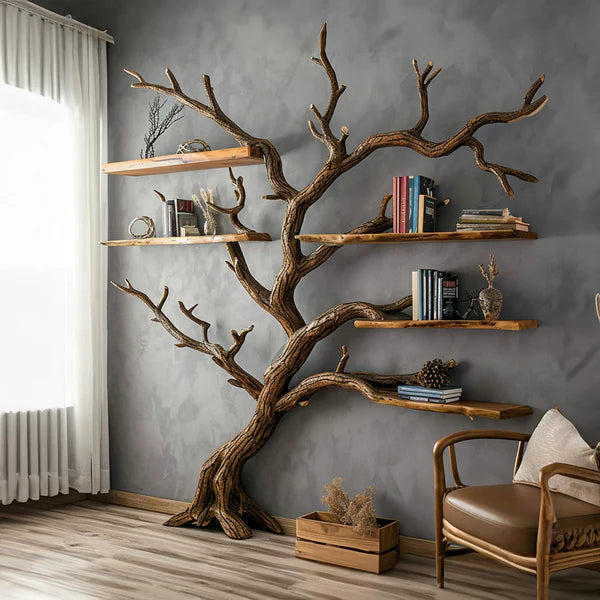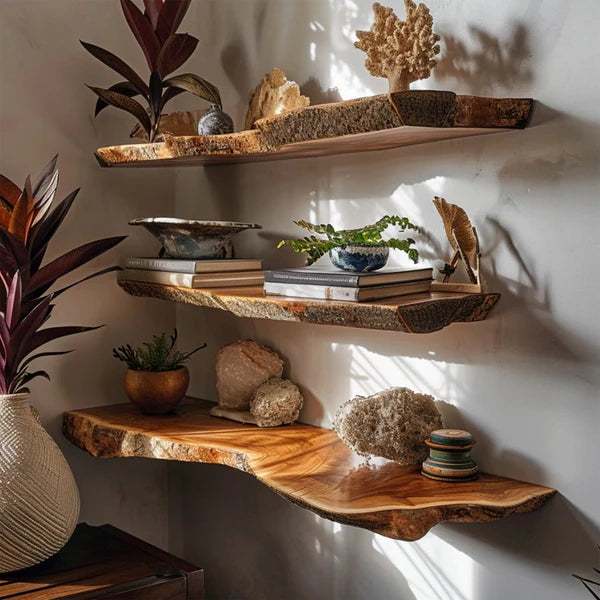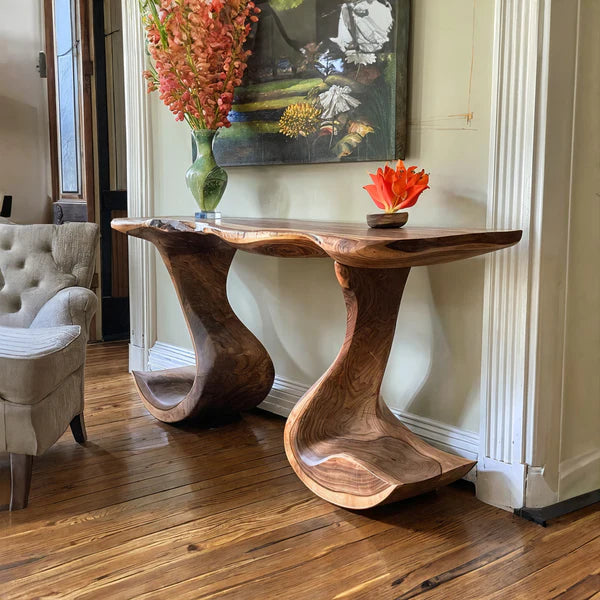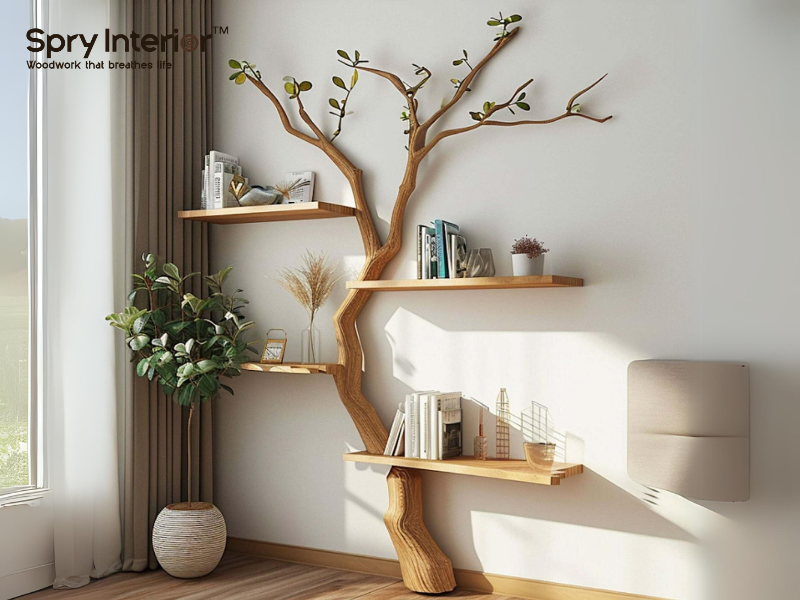Solid wood refers to natural wood obtained directly from trees without undergoing any significant alteration or transformation. Unlike engineered wood products such as MDF (Medium-Density Fiberboard), plywood, or particleboard, solid wood retains its natural characteristics, including the grain pattern, color, and structural integrity. It is cut from a single piece of timber, which makes it highly durable and valuable for various applications, especially in furniture, construction, and home décor.
In this article, we’ll explore the key features, benefits, and considerations of using solid wood in furniture and construction, along with how it differs from other types of wood materials.
Key Characteristics of Solid Wood
Solid wood has several distinguishing features that set it apart from other wood types:

1. Natural Grain and Texture
One of the most appealing qualities of solid wood is its natural grain and texture. Each piece of wood has a unique appearance, with patterns and colors that vary depending on the type of tree, its age, and environmental factors. This distinctiveness gives solid wood furniture and structures a premium, organic look that cannot be replicated by synthetic or engineered alternatives.
2. Strength and Durability
Solid wood is known for its strength and long-lasting properties. It can withstand heavy loads and resist wear and tear over time, making it a reliable choice for items like dining tables, bed frames, and cabinetry. Certain types of natural wood, such as oak, teak, and walnut, are particularly prized for their hardness and resilience.
3. Natural Aging
Another characteristic of solid wood is its ability to age gracefully. Over time, solid wood may develop a patina that enhances its beauty and character. This aging process often adds to the wood's value, as older pieces of solid wood furniture are often regarded as antique or vintage.
Common Types of Solid Wood
Different types of solid wood are used for various purposes, each with its own specific qualities:
1. Oak
Oak is one of the most popular hardwoods used in solid wood furniture. It is known for its durability, distinct grain patterns, and resistance to moisture. Oak furniture often has a classic, rustic appeal that suits both traditional and modern interiors.
2. Walnut
Walnut is a premium hardwood that features rich, dark tones and a fine, straight grain. It is frequently used in high-end furniture and cabinetry due to its luxurious appearance and strength. Walnut is also valued for its workability, making it a favorite among woodworkers.
3. Teak
Teak is a tropical hardwood that is prized for its natural oils, which make it highly resistant to moisture, decay, and insects. These properties make teak an excellent choice for outdoor furniture and marine applications. Teak’s durability, along with its smooth texture and warm color, adds to its reputation as a premium solid wood option.
4. Pine
Pine is a softwood that is lighter in color and weight compared to hardwoods like oak and walnut. It is widely used in construction and furniture making due to its affordability and ease of workability. While pine is softer and more prone to dents, it can still be a durable and attractive choice for many types of furniture.
Advantages of Solid Wood
There are several benefits to choosing solid wood over other types of materials:
1. Longevity
Solid wood products are known for their longevity. Properly maintained solid wood furniture can last for decades, or even centuries, becoming heirloom pieces passed down through generations. The durability of solid wood is one of its greatest strengths, especially when compared to composite wood products, which tend to degrade over time.

2. Aesthetic Appeal
The natural beauty of solid wood adds warmth and richness to any space. The unique grain patterns and natural imperfections, such as knots and swirls, give each piece of wood a one-of-a-kind look. This makes solid wood furniture and flooring highly sought after for creating a welcoming and sophisticated atmosphere in homes and offices.
3. Repairable and Refinishable
Solid wood can be sanded, stained, or refinished to restore its original look or to give it a completely new appearance. This ability to repair and refinish makes solid wood a sustainable and versatile option, as it can be refreshed rather than replaced, extending its lifespan and reducing waste.

4. Environmental Benefits
Many types of solid wood are sourced from sustainably managed forests, making them an eco-friendly choice for furniture and construction. Solid wood is also biodegradable and recyclable, unlike some engineered materials that contain chemicals or adhesives. By choosing certified solid wood products, consumers can reduce their environmental impact.
Considerations When Using Solid Wood
While solid wood has many advantages, there are a few factors to keep in mind when using or purchasing solid wood products:
1. Cost
Solid wood tends to be more expensive than engineered wood products due to the cost of raw materials and the craftsmanship involved in working with it. The price can vary significantly depending on the type of wood, its availability, and the complexity of the design. However, many people consider solid wood a worthwhile investment due to its longevity and aesthetic value.
2. Weight
Solid wood is heavier than its engineered counterparts, which can make large furniture pieces or installations difficult to move or transport. The weight of solid wood should be considered when planning home renovations or furniture layouts, especially for pieces like large cabinets or dining tables.
3. Moisture Sensitivity
Although solid wood is durable, it is also sensitive to environmental factors such as humidity and temperature changes. Exposure to moisture can cause solid wood to warp, crack, or swell over time. Proper sealing, treatment, and climate control can help mitigate these risks, ensuring that the wood retains its shape and integrity.
Solid Wood vs. Engineered Wood
When comparing solid wood to engineered wood, such as MDF or plywood, there are some key differences to note:

1. Structure and Composition
Solid wood is cut directly from the tree, whereas engineered wood is made from wood fibers or veneers that are glued together under pressure. As a result, solid wood has a more natural appearance and feel, while engineered wood is often more uniform in texture and appearance.
2. Durability
Solid wood is generally more durable and long-lasting than engineered wood, which can be prone to damage if exposed to moisture or stress over time. However, some high-quality engineered wood products can offer comparable durability for certain applications.
3. Cost and Availability
Engineered wood is often more affordable and widely available than solid wood, making it a popular choice for budget-conscious consumers. However, the aesthetic and longevity benefits of solid wood often justify the higher price for those seeking quality and craftsmanship.
Conclusion
Solid wood is a timeless material that continues to be highly valued for its beauty, strength, and sustainability. Whether used in furniture, flooring, or construction, solid wood offers a level of craftsmanship and natural elegance that is difficult to replicate with engineered materials. By choosing solid wood, homeowners and designers can create spaces that are not only functional but also deeply connected to nature. Brands like SpryInterior, known for their commitment to high craftsmanship and unique wooden creations, exemplify how solid wood can transform a home into a space of warmth, style, and sustainability.








Leave a comment
This site is protected by hCaptcha and the hCaptcha Privacy Policy and Terms of Service apply.